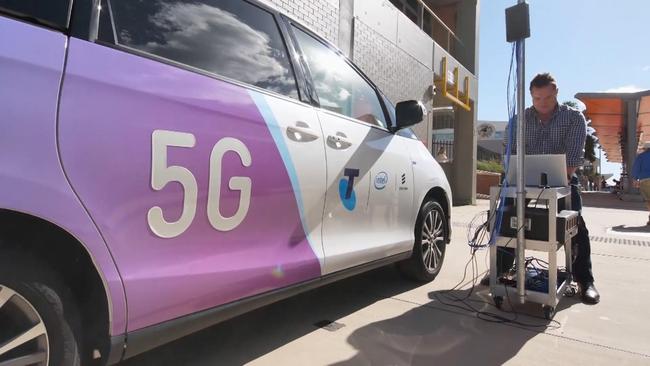‘Game-changer’: Gladstone has 5G from today
Residents of the Gladstone region will now be able to get super fast downloads and streaming with 5G

Gladstone
Don't miss out on the headlines from Gladstone. Followed categories will be added to My News.
SUPER fast download speeds will now be at the fingertips of Gladstone residents after Telstra announced 5G technology is being switched on across the region.
Telstra Regional General Manager Rachel Cliffe said the 5G network, which will provide downloads seven times faster than 4G, had been switched on today in parts of Gladstone.
Over the weekend, Telstra sent text messages to all of its customers in the region advising of upgrades to the network, stating there may be minor disruptions.
Ms Cliffe said Gladstone was among 47 cities and larger regional towns across Australia to get access to the network.
“This is a game-changer for local residents and businesses and will provide customers using 5G devices with higher speeds, lower latency and greater capacity, especially in peak times when the network can be at its busiest,” Ms Cliffe said.
“There’ll also be flow-on benefits to 4G users with upgrades improving capacity for all our mobile customers.”
The announcement comes just six months after Bundaberg and Rockhampton got access to 5G.
Gladstone joins a number of Queensland cities including Townsville, Cairns and Mackay that now have some 5G coverage.
Ms Cliffe said the key benefits of the 5G network over 4G is that it would have more capacity, significantly faster speeds for uploading and downloading and less latency (the time it takes to send and receive a signal-important for things like real time activities like driverless cars and gaming).
“In regional testing we’ve been reaching speeds around 728 megabits per second – that’s up to 7 times faster than 4G,” she said.
Experiences and speeds may differ from location-to-location.
Controversy over whether 5G technology is safe or not was dismissed by Australia’s Chief Medical Officer, Professor Brendan Murphy.
“There is no evidence telecommunication technologies, such as 5G, cause adverse health impacts,” he said.
“This position is supported by health authorities in Australia – such as the Australian Radiation Protection and Nuclear Safety Agency and around the world, such as the World Health Organisation.”
Prof Murphy said mobile phone networks and other wireless telecommunications emit low-powered radio waves also known as radiofrequency (RF) electromagnetic energy (EME).
“This is different to ionising radiation associated with nuclear energy or use in medicine,” he said.
“The radio waves to which the general public is exposed from telecommunications are not hazardous to human health.”
To use 5G, people will need a 5G enabled phone, 5G coverage and a 5G mobile plan.
If they move to an area where there is not 5G, their phone will revert to the next fastest technology - 4GX or 4G.
Residents can get more information on 5G and see the latest devices at www.Telstra.com/5G or at their nearest Telstra store.


